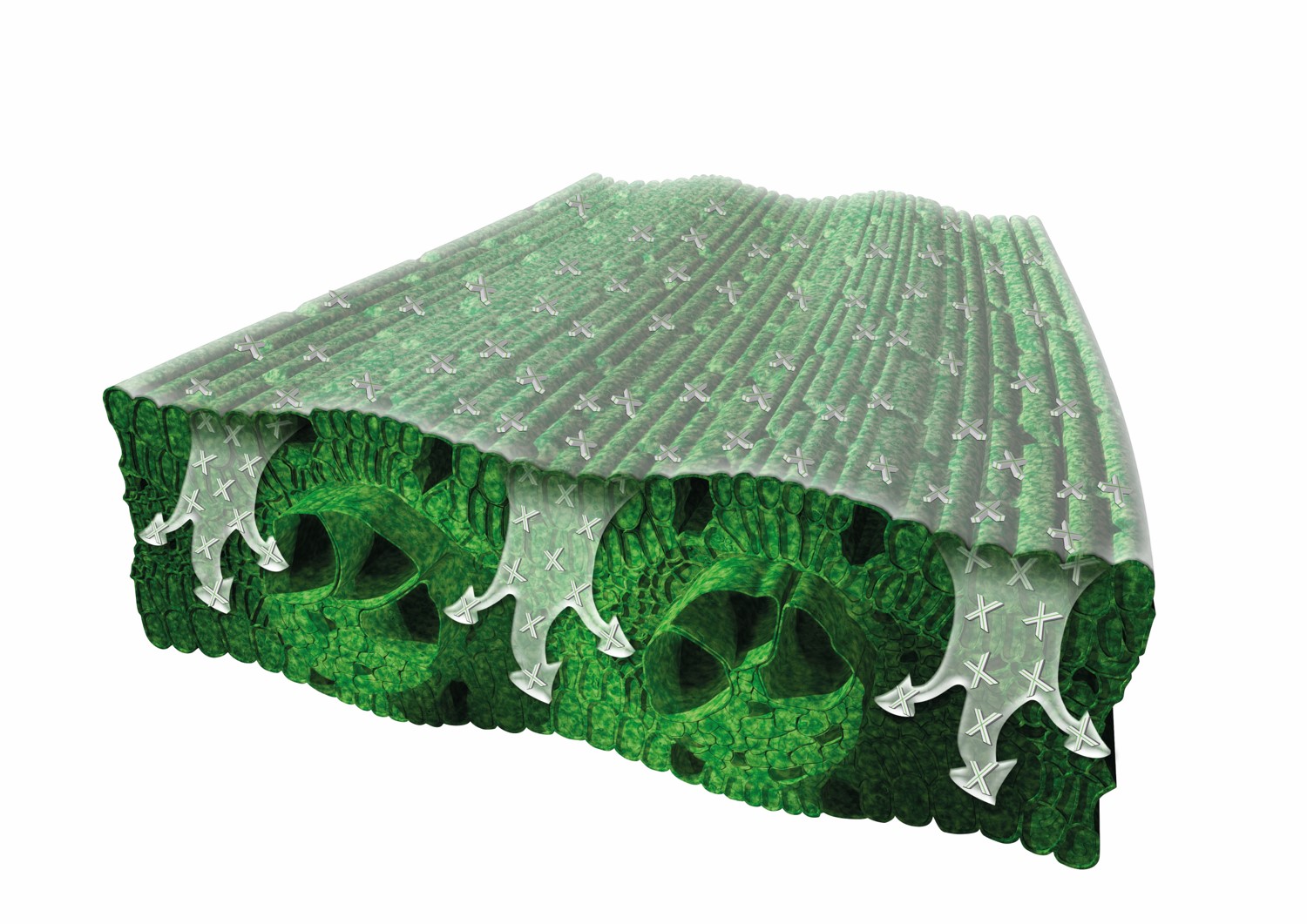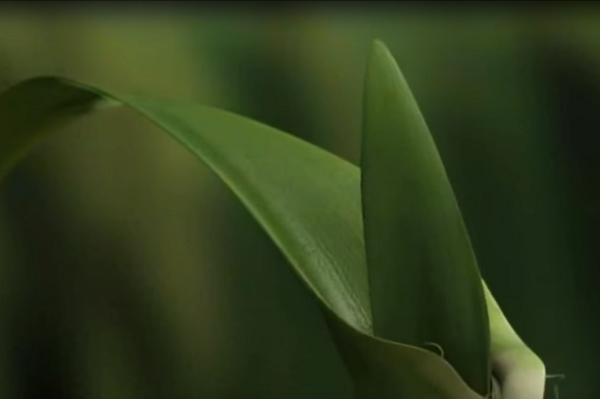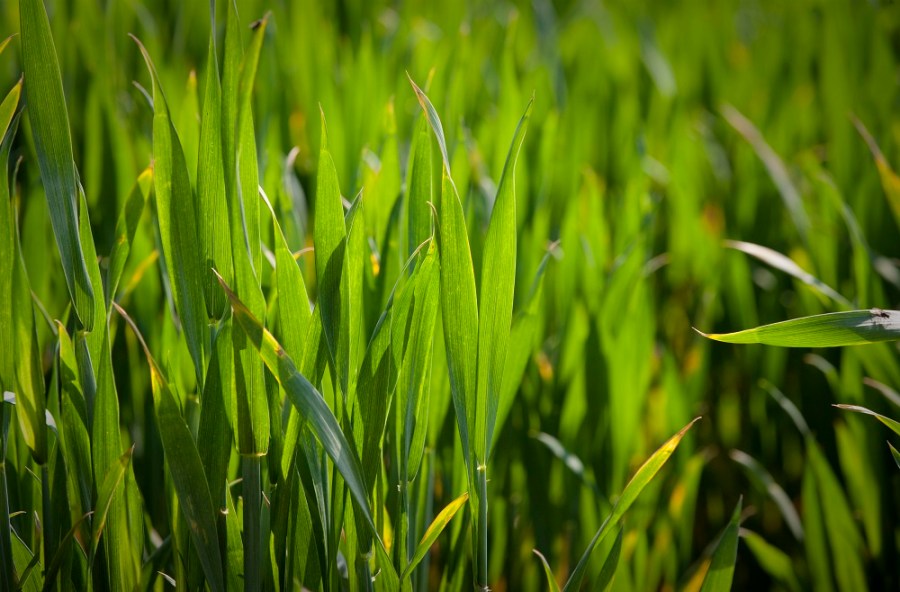Septoria’s latent phase is infuriatingly hard to predict or detect, but a better understanding of this unseen threat can bring far greater precision to fungicide programmes. CPM gains an insight.
Septoria does a lot of burrowing and damage internally before any symptoms start to show.
By Tom Allen-Stevens
Right now, there’s a cancer in your crop. You can’t see it but it’s there – pervading the plant tissue, sucking the life out of its cells, and crucifying its potential – silently, invisibly, mercilessly.
It sounds like a trailer for a B-rate horror movie, or at least a rather clumsy ploy by a pesticide manufacturer to persuade you to apply fungicide to an apparently clean crop. But it’s actually a reasonably accurate description of what Septoria tritici does during its latent phase, according to BASF’s Ben Freer.
“Just because you can’t see the disease, it doesn’t mean it’s not there,” he says. “Growers think they have a happy, healthy crop, but we know that septoria does a lot of burrowing and damage internally before any symptoms start to show.”

The extent to which latent septoria is underestimated was revealed from 132 leaf tissue tests taken last spring from apparently disease-free, treated wheat crops just as they reached flag leaf. These revealed 90% of leaves three and four and 64% of leaves one and two were infected with septoria. But 60% of growers taking part in the study believed their crops were clean from top to bottom.
“A septoria spore actually has quite a tough time getting into a leaf,” notes Ben. “It has to be splashed up from the lower canopy, land on a leaf and find a stomata to get into the plant. Most spores never make it.”
But those that “hit the jackpot” grow hyphae through the plant tissue. “There’s a 7-10 day period from infection during which fungicides are active. How long is determined primarily by temperature and varietal resistance – a high disease rating will slow the pathogen down. During the latent phase, septoria hyphae build their network, sucking juice out of the plant tissue, before the cells themselves cave in and go brown. That’s the first visible sign there’s a problem, but by then the disease is far too advanced for current fungicides to be effective.”
It was to draw attention to this phase and gauge how much septoria infection passes unperceived that led BASF to carry out the leaf-tissue tests. This year, the company’s offering the same service, known as Cura Crop, free of charge to ten CPM readers (see panel below).
“It is important to understand the latent phase of septoria, because it’s the critical point of control for the pathogen, and this in turn is very much influenced by resistance to fungicides,” explains Ben. “So a key part of improving efficacy and protecting the chemistry we have is to use the fungicides more effectively during this phase.”
And crops could currently be laden with this unseen threat, believes NIAB technical director Bill Clark. “The perfect scenario for septoria is a season with damp weather, heavy rainfall events and warm periods. Boy, have we had the perfect spring so far,” he says.

The flag leaf grows up through leaf three, and if the tip of leaf three’s infected, that’ll pass on to the flag.
“Added to this, many growers failed to get a T0 spray applied. That meant there was septoria on leaves four and five, so leaf three probably got infected as it emerged, particularly the tip. If that’s the case, it’s a problem because the flag leaf grows up through leaf three, and if the tip of leaf three’s infected, that’ll pass on to the flag.”
That’s why the timing of the T1 spray is so important, he notes. “The ideal timing is leaf three almost fully emerged on the main stems. This gives protection and some eradication of septoria on that leaf layer, ensuring a disease-free environment for the flag leaf, so you don’t get this knock-on effect of disease infection.
“But even the best SDHI can only control septoria in the first half of the latent period. So if your crop’s infected, but not showing symptoms, a well timed T1 spray applied during that period should achieve the control you’re looking for,” says Bill.
The type of chemistry used therefore makes a crucial difference, says Ben. “A spore that’s on a leaf is a sitting duck, and chlorothalonil (CTL) will control it. But once it grows into the leaf, it’s protected and that’s when you need azoles and SDHIs, because they can follow the hyphae into the leaf tissue.
“SDHIs are able to control septoria further into its development during that latent phase than azoles – that’s the capability in azoles that’s eroded as a result of resistance. In the case of Xemium (fluxapyroxad), this ability to control septoria goes further into the latent period than other SDHIs,” he says.
So how does the prospect of resistance affect SDHIs? “We don’t yet know whether it’s a gradual reduction in efficacy, as with azoles, or a rapid cut-off, as with strobilurins. We think it’s more like a rapid cut-off, but isolates that have developed resistance currently haven’t proven very fit, so don’t persist very well in the field to go on and generate spores. That’s why you need both the SDHI and the azole – the more confusing to the pathogen, the better.”
In somewhat the same way, but to a lesser extent, the type of azole also has an effect, continues Ben. “Epoxiconazole (EPX) is one of the two leading azoles, but if you use it at T0, for example, you start selecting isolates that are resistant to it, and it’s less effective later on at the key fungicide timings. That’s why it’s best saved until T1 in Adexar (fluxapyroxad+ EPX).
“Librax contains metconazole (MTZ), a lesser azole than EPX, but formulation is important. Getting the active ingredient into the plant through the waxy and water-based layers is half the battle in fungicide chemistry. The way Librax is formulated means the difference in efficacy between MTZ and EPX disappears.”
So those growers who applied a robust T1 at the right timing have “all to play for”, unless yellow rust has got in, even if there was no T0. “If the T1 was a little early, chances are it won’t offer control of latent septoria right up to flag leaf emergence, and a T1.5 may be needed to protect against new infections,” says Ben.
That’s where a leaf-tissue test can be very revealing, says Bill. “If it shows there was no infection at leaf three emergence, you’d have had more flexibility to go with a cheaper fungicide, or wait until more of the leaf three is fully emerged. It’s very much the same at flag leaf.
“You can get an in-season idea from inspecting the lower leaves – if there’s septoria on leaves four and five at the T1 timing, you can infer leaf three is also infected. If leaf three is clean at flag leaf, either there was little infection early on or the T1 worked well. But any signs of infection on leaf three and that brings an urgency to your flag leaf spray – it may already have latent septoria.”
The ultimate tissue test is one that would give you an instant result in the field, notes Bill. “The technology for pre-symptomatic detection exists – it just needs miniaturising and making cost effective. It would also be useful to know how far through the latent period an infection is.
“But give it a couple of years and growers could be using these sorts of tools in the field – that’s when the unseen threat will become clear and growers will be able to adjust their spray programme with far more precision.”
FREE Cura Crop kits for CPM readers
BASF is exclusively offering ten CPM readers the opportunity to test their crop for latent septoria. The Cura Crop test will give you the definitive answer on whether your wheat is infected and will help you make more informed spray decisions in the future.
To apply for the kit, just email your name and address to info@cpm-magazine.co.uk. BASF will then send the first ten growers who apply a kit with full instructions on what and how to sample.
“The field to pick for the test is a wheat variety you think is clean,” says Ben Freer. “The correct time to sample is when the flag leaf has emerged, but just before you apply the T2 fungicide. What the test will tell you is whether your T2 spray is doing a protectant or curative job.”
Two lots of representative samples should be taken and then bagged separately. “You’re looking to find out the infection status of each layer of your crop. So you should take a representative sample of leaves three and four, and then separately, take a few flag leaves and leaf twos,” explains Ben.
The kit includes a postage-paid envelope, and the sample should be sent directly – no incubation or other treatment is necessary. “Septoria in wheat leaves isn’t like light leaf spot in oilseed rape – if you try to incubate the leaves they will just dry out. But if they’re infected, the test will pick this up – it’s a PCR assay that detects septoria DNA.”
However, the test isn’t an indication of what to spray this season, he stresses. “The turnaround isn’t rapid, and you definitely won’t get results back before the T2 spray should be applied. It’ll give you feedback on the T1 and T2 sprays you applied this year, which should help you make more informed decisions in the future.”
The Cura Crop results will tell you simply whether septoria was present or not in the leaves at the time of sampling. To help further, Ben recommends growers take pictures of the sampled crop and keep detailed records of any disease seen throughout the season.
“The visual record, along with the Cura Crop results, should allow you to deduce not only whether you had latent septoria, but how successful your T1 and T2 sprays were at controlling it,” notes Ben.
CPM will also receive the results – look out for a full analysis on what they mean in a future issue.
(Note: only ten free tests are available and will be distributed on a first-come, first-served basis. To apply, email info@cpm-magazine.co.uk, providing your name and full postal address with postcode, and put ‘Cura Crop’ in the subject line. Unsuccessful applicants will be informed. All emails submitted will only be used for this promotion and will be deleted subsequently.)
Scan your way to an innovation tour of New Zealand
Growers using Adexar and Librax have the chance of winning a place on a 12-day farm innovation tour of New Zealand later this year. The tour will focus on the trials, farming practices and new technologies that deliver the world’s highest yielding wheat crops.
To be eligible, arable farmers are being invited to download an app developed to log product purchases by scanning QR codes on the side of each can. Those buying and scanning over 150 litres of Adexar and or Librax will be entered into the prize draw to join the trip.
Purchases of just five cans or more will enter farmers into a draw to win one of 150 pairs of Le Chameau wellington boots, and everyone who buys any Adexar or Librax will receive an insulated ‘mighty mug’.
The tour, which will include both the North and South Islands, will be fully funded by BASF and will run from 24 Nov until 7 Dec. There will be 15 places available.
“The innovation tour will combine farm visits, trials tours and will give those attending the opportunity to talk to farmers who are existing in the world without subsidies,” says BASF’s Tim Short.
“We’re also adding in visits to explore how new and old technologies are being used to deliver some of the biggest wheat yields in the world,” he notes, “plus we will visit farm trials of our new cereal fungicide, Revysol.”
To get involved, download the app at www.basfrealresults.co.uk and start logging purchases from today. The draw will take place on 18 July 2018.
The Real Results Circle
BASF is partnering with ADAS and AgSpace for the second year of the Real Results Circle. The initiative is focused on working with 50 farmers to conduct field-scale trials on their own farms using their own kit and management systems. The trials are all assessed using ADAS’ Agronōmics tool, which, for the first time, brings statistical certainty to tramline, or field-wide treatment comparisons.
In this series, partnered with CPM, we will follow the journey, thinking and results from farmers involved in the programme. The features will also look at some in-depth related topics, such as SDHI performance and data capture and use.
We want farmers to share their knowledge and conduct on-farm trials. By coming together to face challenges as one, we can find out what really works and shape the future of UK agriculture.
To keep in touch with the progress of these growers and the trials, go to www.basfrealresults.co.uk




